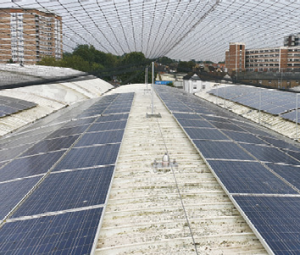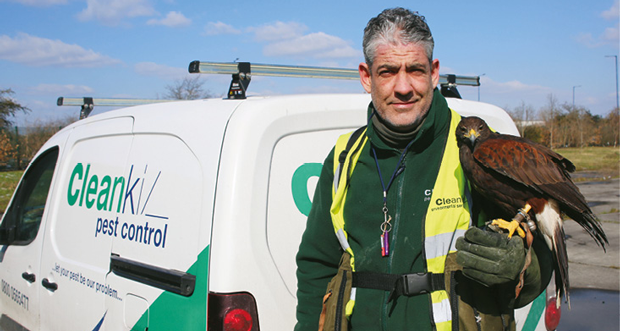A range of pests can wage war on your premises, says Paul Bates, MD of Cleankill Pest Control, with advice on how to win the battle against pests by taking a strategic approach in deterring, detecting and eradicating the problem
Pest control can be compared with going into battle – technicians have to work strategically to predict the worse-case scenarios and be one step ahead of the enemy. Unfortunately, pests such as fleas and cockroaches are excellent travellers. Cockroaches can hitch a lift in cardboard packaging while fleas and other biting insects can cling to employees’ clothing if they are using public transport.
No establishment can ever be guaranteed pest free. Modern building techniques like using stud partitioning, breeze blocks, suspended flooring and main service voids, often lend themselves to creating the perfect harbourages for pests.
Overgrown vegetation can provide the ideal hiding place for rodents and rubbish storage areas may need examining if they are attracting rats and mice.
QUALITY OF SERVICE OVER PRICE
As outlined, the contractor should belong to the British Pest Control Association, with all staff qualified to at least RSPH Level Two in pest control. Check for Health and Safety accreditations and full employers’ and public liability insurance.
Use a provider that has a stable workforce so your dedicated technician gets to know your site thoroughly. Some FMs can be misled by cheap quotes and then they find the provider adds on unexpected extras which means the seemingly cheaper quote wasn’t cheaper after all.
Make sure that there is a pest control contract in place. Normal contracts for standard premises will include a minimum of eight inspections a year. The inspections should include all common areas such as: plant rooms; basements; riser cupboards; car parks and landscaped areas – all of the areas where pests could harbour and reproduce undisturbed.
PROOF YOUR PREMISES
Proofing against a whole range of pests is never the be all and end all, but should be looked at as part of the overall integrated pest control system. Effective proofing will restrict rather than be a complete ‘NO ENTRY’ to mice. Bristle stripping the bottom of doors, especially external doors and riser cupboard doors, should restrict movement and keep the rodents out of the building.
 Checking the external airbricks and weep holes and putting specially designed covers on them, if necessary, should be another regular inspection. Bird spikes onto ledges, as well as the girders beneath fire escapes and parapets, will stop pigeons messing on steps and walkways. Netting on lightwells prevents birds gaining access into sheltered areas at the back of buildings. Pigeons bring with them other pest problems such as bird mite, fleas and flies while fouling blocks gutters, downpipes and air-conditioning intakes.
Checking the external airbricks and weep holes and putting specially designed covers on them, if necessary, should be another regular inspection. Bird spikes onto ledges, as well as the girders beneath fire escapes and parapets, will stop pigeons messing on steps and walkways. Netting on lightwells prevents birds gaining access into sheltered areas at the back of buildings. Pigeons bring with them other pest problems such as bird mite, fleas and flies while fouling blocks gutters, downpipes and air-conditioning intakes.
Cleankill has its own in-house Harrier Hawks and handlers and the service is particularly popular with FMs who want the greenest possible methods of pest control to be used.
FLY CONTROL
Flies can cause particular problems as the weather gets warmer and also in the Autumn when cluster flies appear. The best solution is to install fly-control units in kitchens, catering areas, bin rooms and delivery bays to catch the flies before they enter the building. Modern units use glue-boards and can be moved around affected areas. The latest units use LED lighting which is more economical than the older UV fluorescent bulbs.
Flies and other insects can be treated using ultra low-volume insecticide applicators during out-of-hours periods. Fly screens can be an excellent way of maintaining a through air flow while restricting pest access.
INSPECTIONS AND REPORTS
Regular pest control inspections should keep a good control over the rodent situation. Rodenticides should be strategically placed around the property as a first line of defence. If rodents are spotted, your pest control technician should extend the placement of rodenticides or increase the number of visits. Insect detectors can be installed discretely throughout buildings and regularly checked.
Your pest control contractor should give suitable advice and should work in conjunction with you – good pest control is a two-way street and effective and regular communication between both parties is essential.
Finally, digital reporting should mean a report is sent within minutes of the service being carried out. Reports should be read and acknowledged, not just filed away. They will help you when environmental health officers visit.





